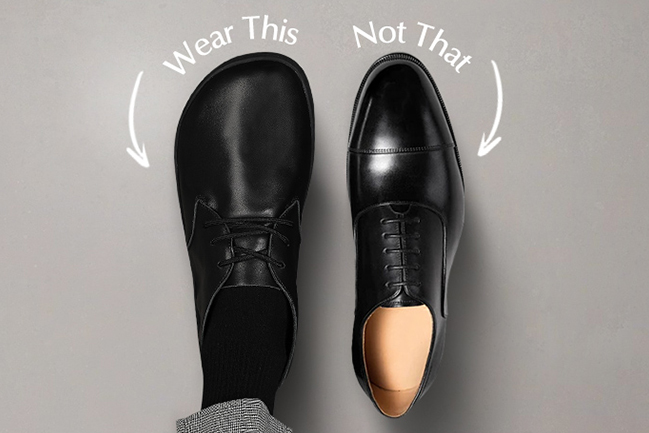What are barefoot shoes?
Barefoot shoes, also called minimalist shoes, are designed to mimic the feeling of walking barefoot while providing some protection from the ground and rough surfaces. They typically have the following features:
•A thin, flexible sole that allows for a natural feel of the ground.
•A zero-drop design, meaning there is no difference in height between the heel and toes.
•A wide toe box that allows the toes to splay naturally.
The idea behind these shoes is to promote natural foot movement and strength by avoiding the restrictive and supportive features of traditional shoes.
Why are barefoot shoes growing in popularity?
The reasons many people are turning to barefoot shoes include:
Foot health: Proponents believe that traditional shoes can lead to weaker foot muscles and altered gait mechanics, which can contribute to common foot problems such as flat feet, bunions, and plantar fasciitis. Barefoot shoes are thought to help reverse these problems by encouraging natural foot function.
Performance: Some athletes believe that barefoot shoes can improve running efficiency and reduce the risk of injury by promoting a more natural running form.
Comfort: The flexibility and breathability of barefoot shoes can provide a more comfortable experience for daily wear.
However, despite many anecdotal reports of their benefits, the scientific community is still debating the overall effectiveness and potential risks of barefoot shoes.
What is the scientific evidence?
Research suggests that barefoot shoes may be beneficial for foot health, but the results are mixed. Here are some key findings:
A study published in Scientific Reports found that after six months of wearing minimalist shoes, foot strength increased by an average of 57.4%, suggesting that barefoot shoes may help strengthen foot muscles.
Research in the Journal of Sports Sciences suggests that running in barefoot shoes may lead to a shorter stride length and increased stride rate, which may reduce the risk of certain types of injuries.
Some studies suggest that wearing barefoot shoes may help manage or prevent foot deformities such as bunions and hammer toes by allowing the toes to splay naturally.
However, there are potential risks:
A systematic review in Sports Health found limited good-quality evidence to support barefoot running or wearing minimalist shoes for injury prevention and performance improvement.
If you transition quickly from traditional shoes to barefoot shoes, you may increase your risk of injury, especially to the Achilles tendon and calf muscles.
Potential Risks and Precautions
While barefoot shoes may provide benefits, they are not for everyone and there are a few things to be aware of:
Who should be cautious?
Individuals with severe flat feet, high arches, or other structural issues may need more support than barefoot shoes provide.
Older adults may have weaker muscles or balance issues that make barefoot shoes unsafe.
Some athletes may need more cushioning or support for high-impact activities.
Importance of a Gradual
Transition It is critical to gradually transition from traditional shoes to barefoot shoes to allow the foot to acclimate. Here is a step-by-step guide:
Weeks 1-2: Wear barefoot shoes 1-2 hours per day at home or on soft surfaces.
Weeks 3-4: Increase wear time to 3-4 hours per day, including short walks on flat surfaces.
Weeks 5-6: If comfortable, gradually increase to full-day wear and begin using them for longer walks or light runs.
Conclusion
The science of barefoot shoes and foot health is complex and still evolving. While there is evidence that they can improve foot strength and function, there are potential risks, especially for people who are not used to them. If you are considering trying barefoot shoes, it is important to do your research, consult a medical professional if you have any concerns, and transition gradually.
For more information on our range of high-quality barefoot shoes, visit our website or contact us directly.


